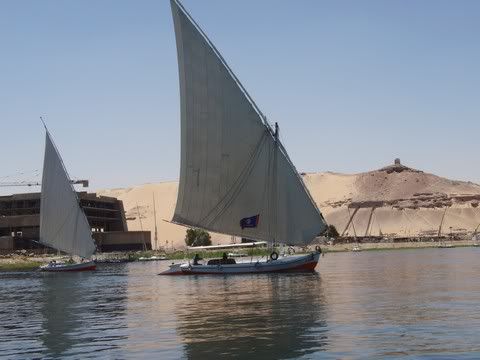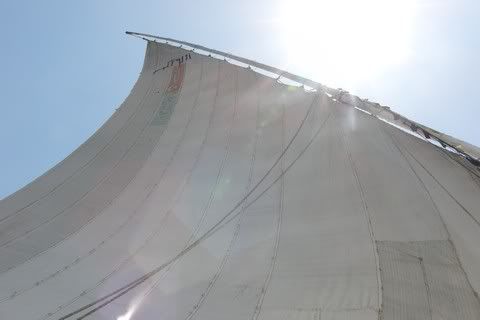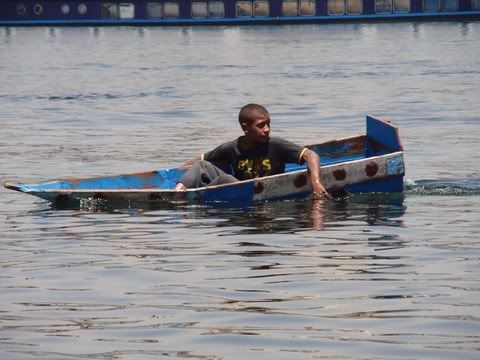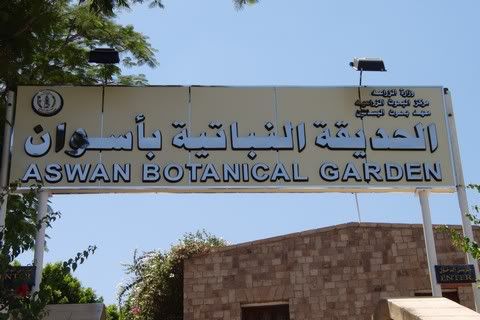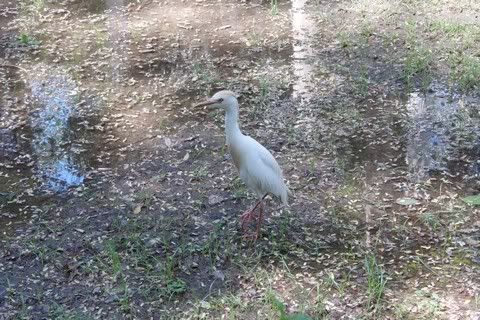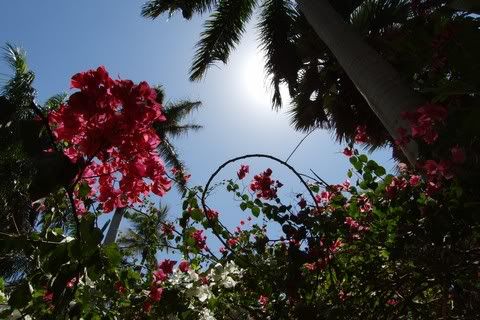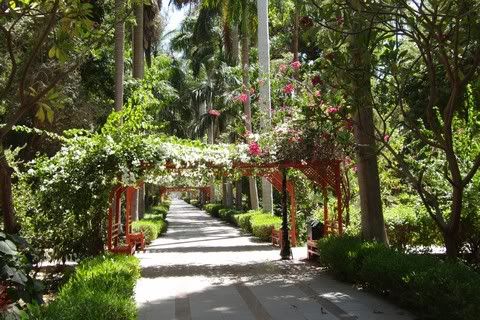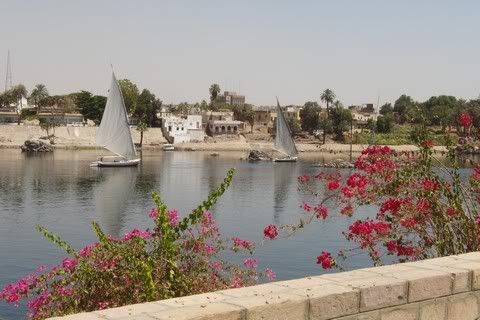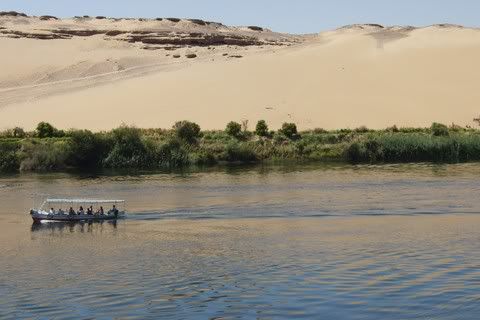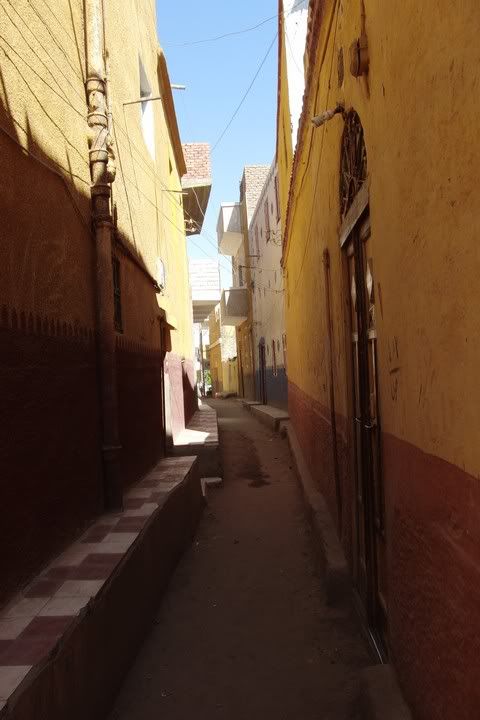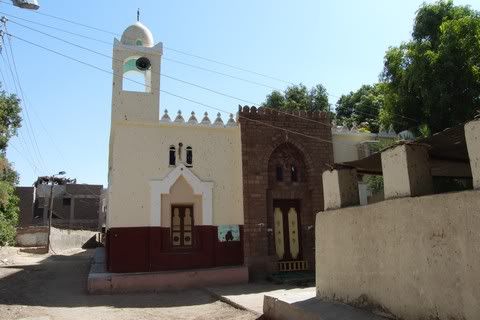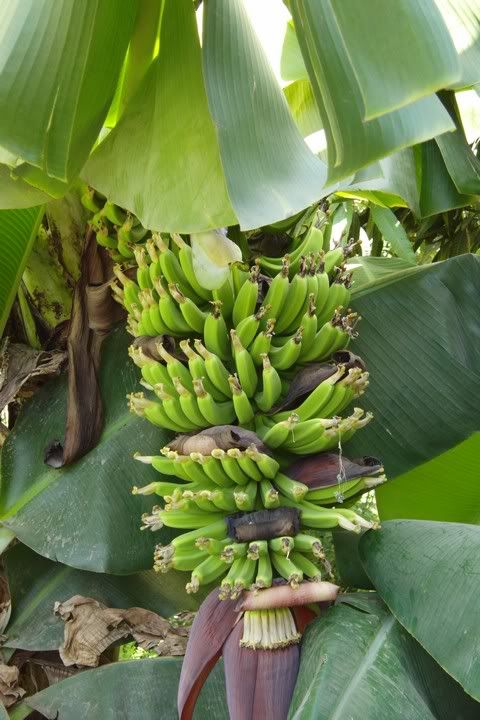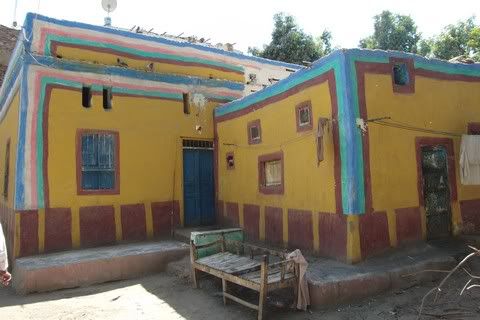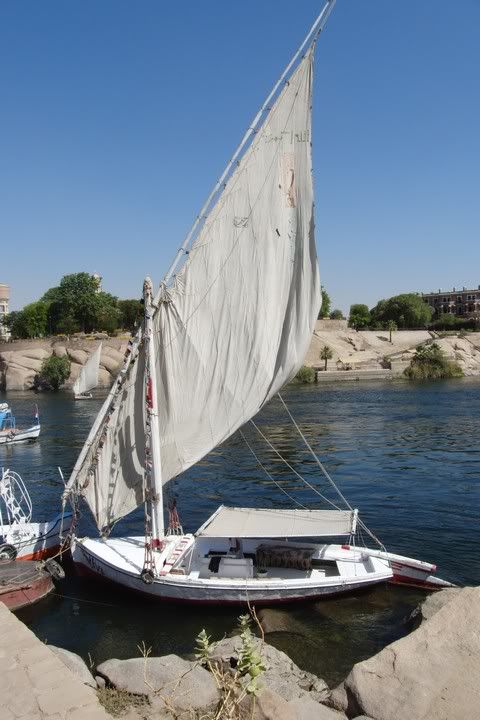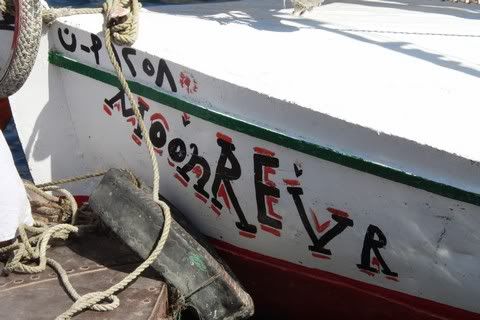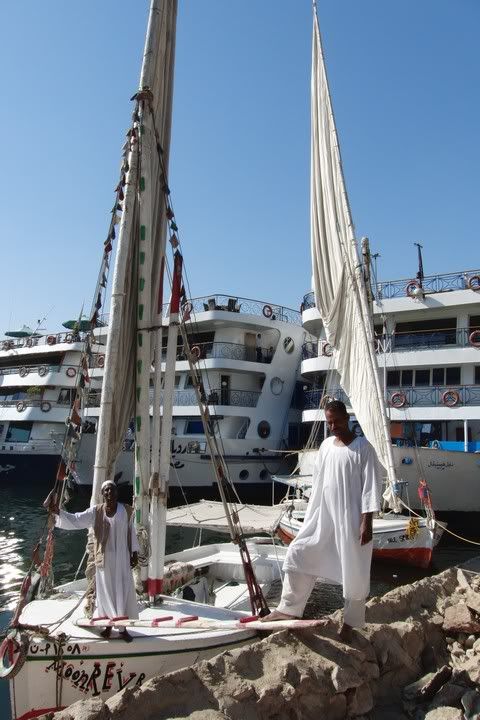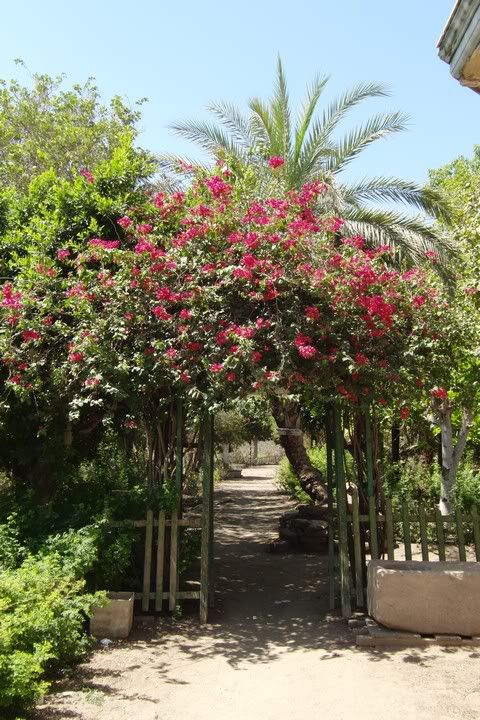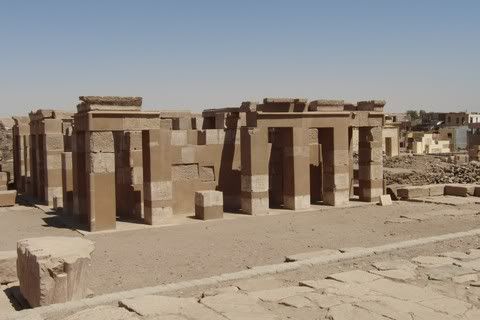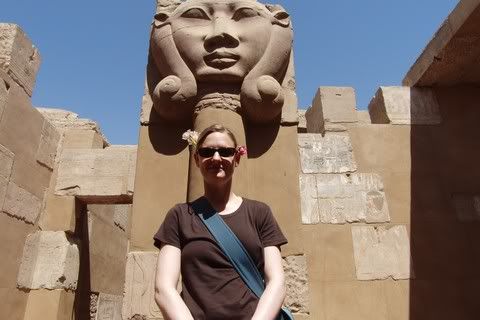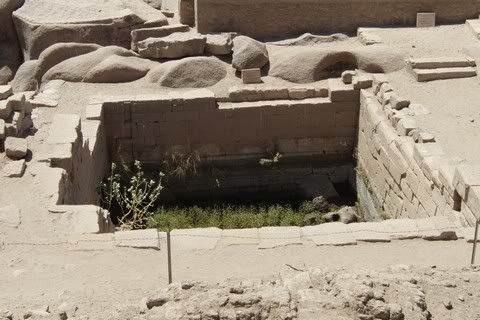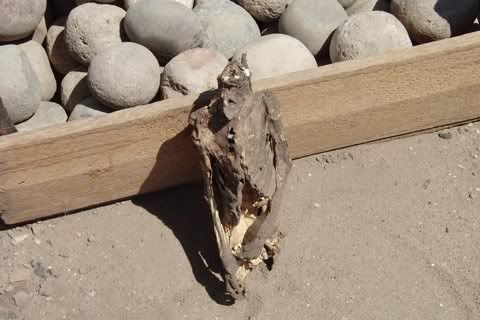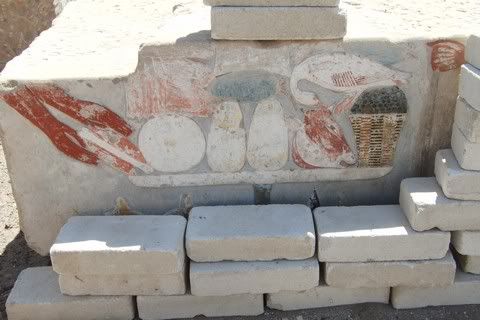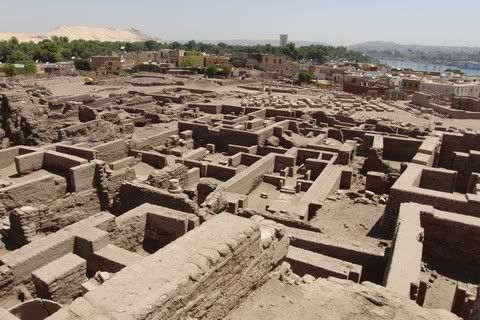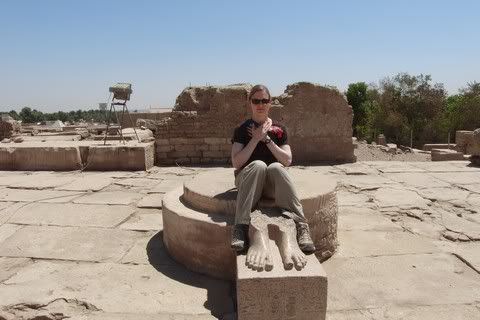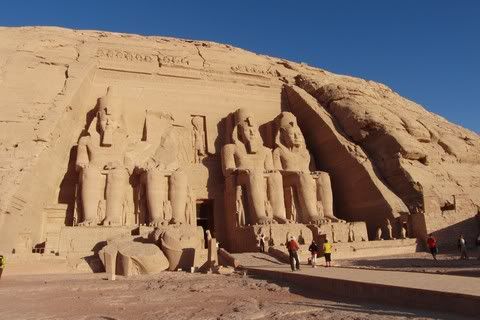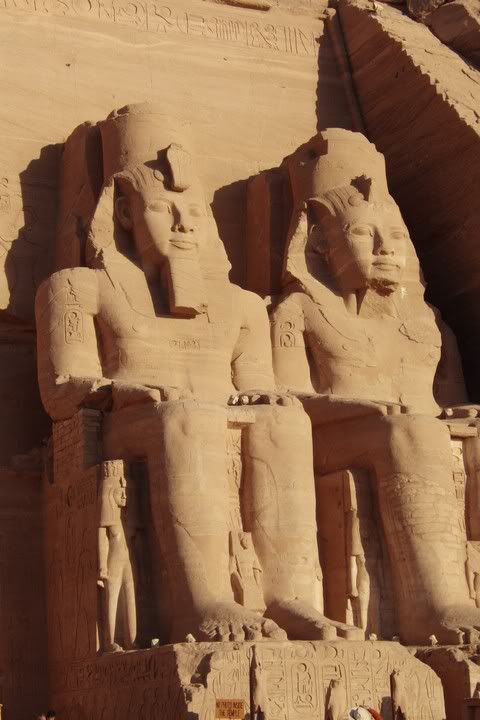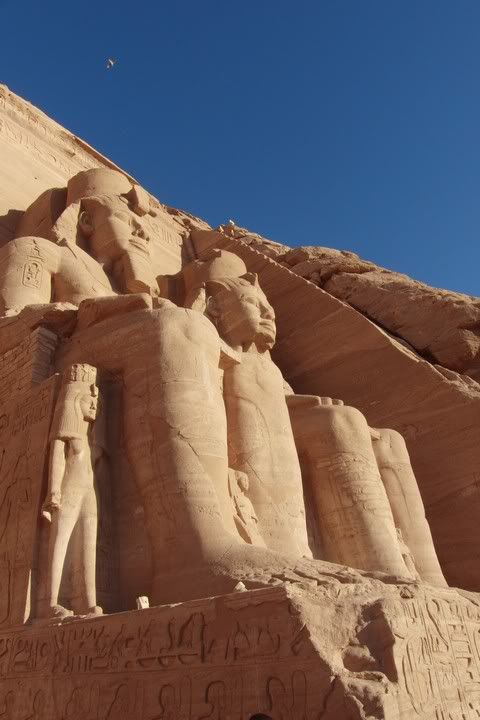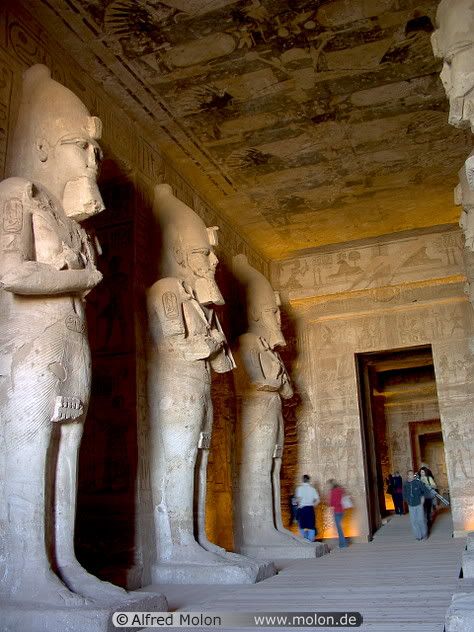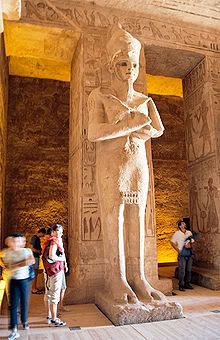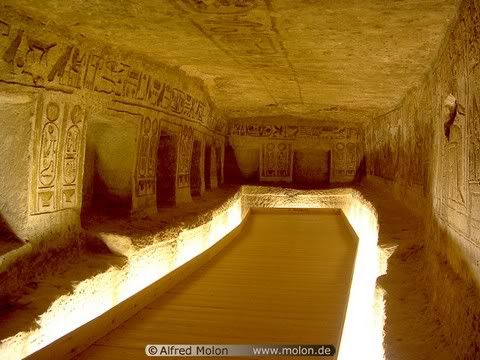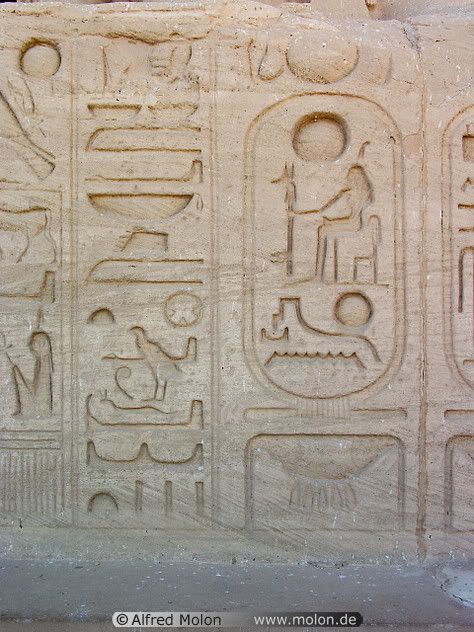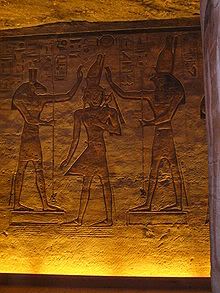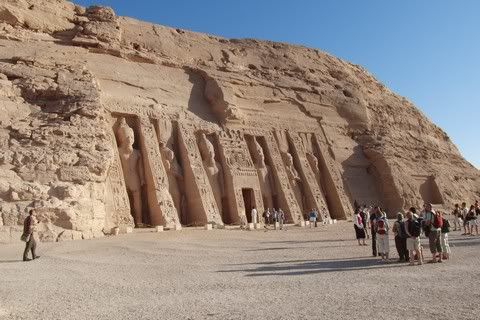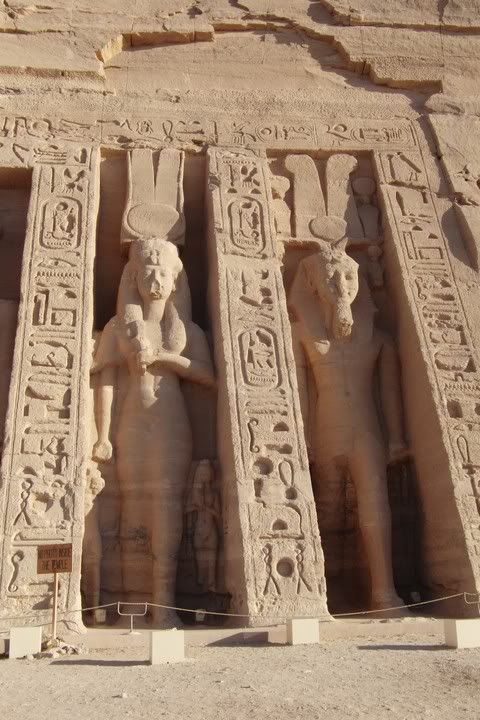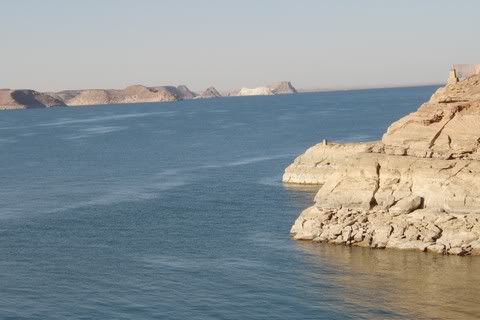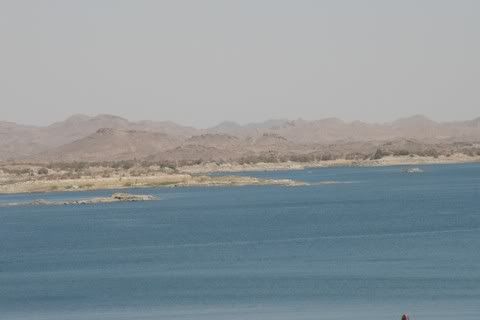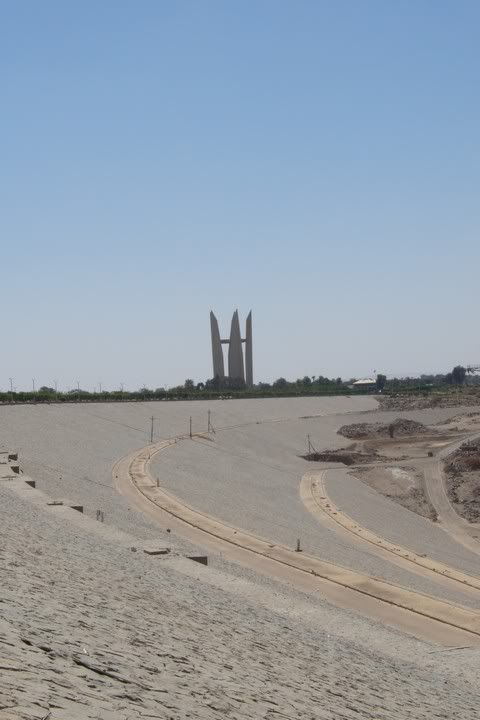Egypt 8 – Felucca sailing and a Nubian Village
Wednesday, May 19th, 2010A felucca
View of the sail looking up from my boat
Kid in a Nile-style row boat
After returning to Aswan by about noon following the epic trek to Abu Simbel, I considered a nap but decided I needed to man-up to make sure I got to see the rest of the sites available in Aswan before I headed to Luxor the next day. Aswan is a cute little village on the shores of the Nile near two islands: Kitchener and Elephantine. A fun thing to do is take a felucca ride around the islands stopping on both to see the sites. A felucca is an Egyptian sailboat and is a fantastic and comfortable way to beat the heat and get a different perspective. I negotiated with a felucca captain at the shore for about $10 per hour and set off on a 3 hour adventure. The first stop was the uninhabited Kitchener Island which houses a surprisingly beautiful botanical garden. After about 30 minutes there we continued our sail, had a nice cup of tea (prepared on a propane burner on the boat) and stopped at Elephantine Island which is home to the Aswan Museum, a Nubian Village and the obnoxious and luxurious Movenpick Hotel.
Scenes from the botanical garden on Kitchener Island
The Nubians, if you recall from earlier, are an ancient African people who were also largely displaced by the damming of the Nile. The Nubians are one of Africa’s oldest tribes dating to the 4th millennium BC and who were settled along the Nile from Aswan and south into Sudan. After the damming of the Nile, they were relocated to several locations including Elephantine Island where several villages remain today. When I disembarked from my felucca, the village’s “chief” met me at the boat landing. He took me on a tour (which was not optional and for which I was expected to tip him) through the village. I’ve included some pictures here…the chief told me that 3000 people live in this little village though during the day they are mostly off the island working. The gardens were of some interest to me as he said they are all community gardens open to everyone in the village and the excess production is sold on the mainland.
Contrast of the green Nile Valley and the nearby desert
Scenes from a Nubian Village
Mosque within the Nubian Village
The next day I returned to Elephantine Island to visit the Aswan Museum and a new “chief” offered his tour services which I declined with a bit of a chuckle on my way to the ferry. The rest of the pictures below are from the still-being-excavated ruins of Elephantine Island. Of particular interest is the photo of the Nilometer…one of a few remaining in Egypt that was previously used to measure flood levels of the Nile to predict crop yield and subsequent taxes.
Tomorrow the Mini-Extravaganza is headed to Luxor for the Valley of the Kings and the temple of Hatshepsut. Enjoy the photos!
Bananas
Mangos

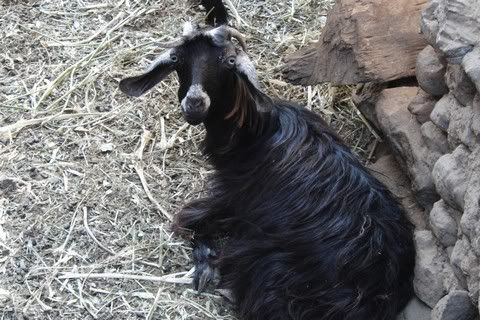
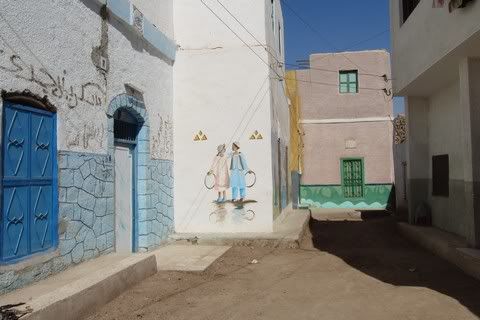
My felucca waiting for me at Elephantine Island
My two intrepid captains bidding me farewell
Ruins from Elephantine Island
Yes those are flowers stuck behind my ears. My guide insisted.
One of the Nilometers on Elephantine Island. I will admit I don’t totally get how this works.
Mummified baby if you can believe it. I had to stop short of letting him take a picture of the baby mummy with me in the photo.
Ridiculous. This guide offered my 2nd of 3 marriage proposals and quite frankly, the most serious. He even got out his phone to exchange numbers.

